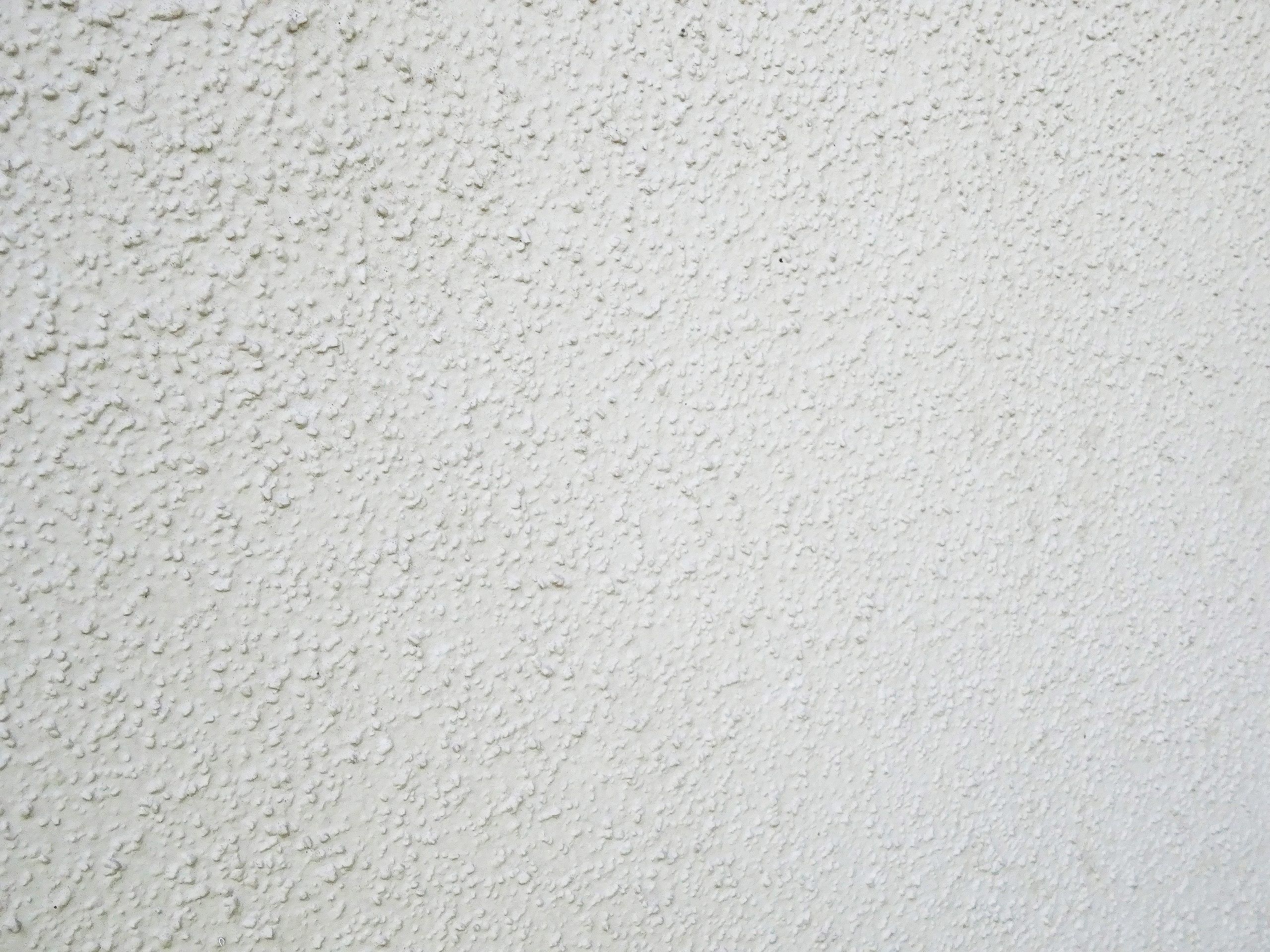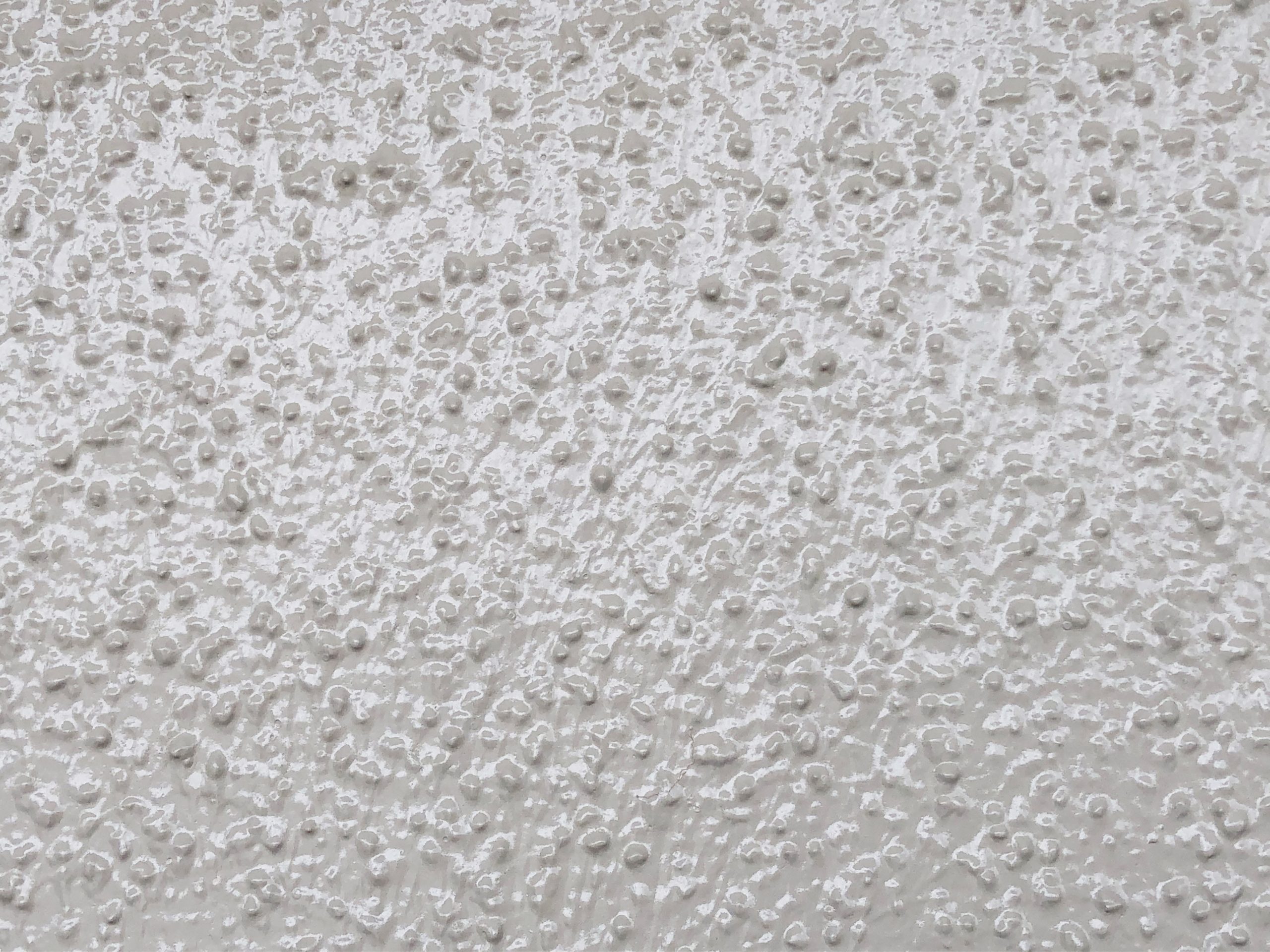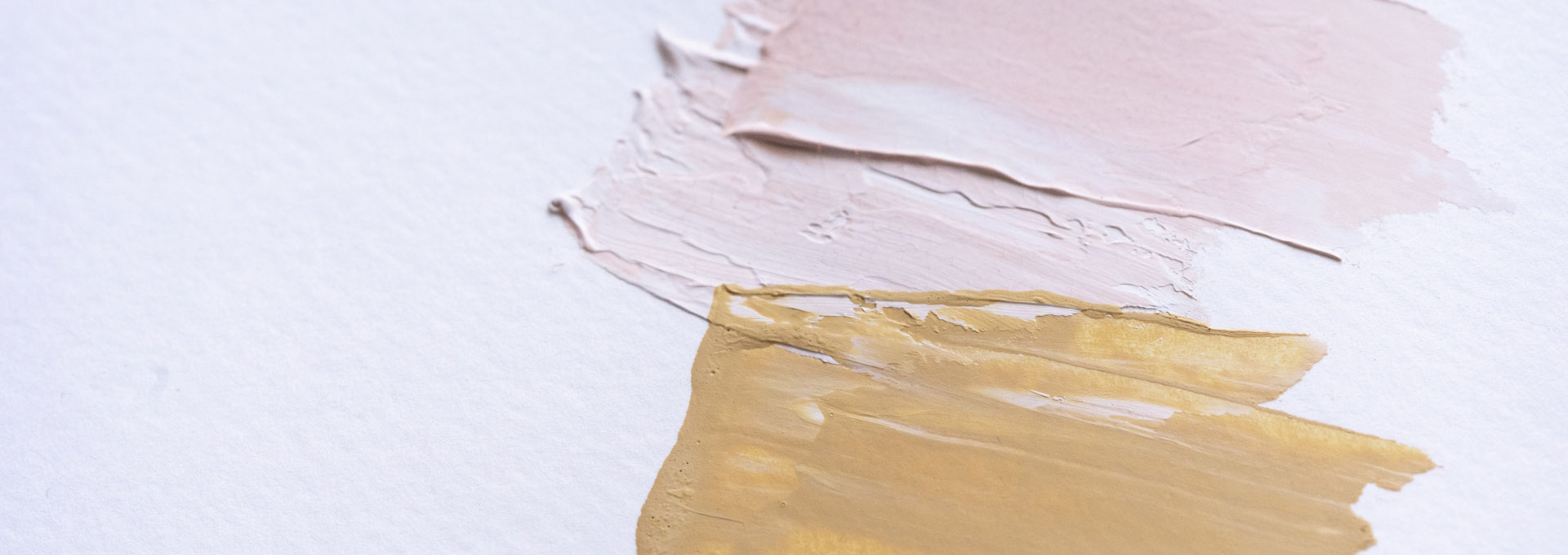
How to choose paint
The most important thing to do to protect your precious home is to "use reliable paint and have it painted by a reliable contractor."
Although they may all look the same when lumped together as "paint," there are many differences between them, such as durability and performance.
Durability varies greatly depending on the paint, with some lasting 10 years and others 20 years.
In terms of performance, different paints have different characteristics, such as heat insulation, mildew resistance, and waterproofing.
It is common to think that "paints that have long durability and many functions are better!", but when you also consider the price, this is not the case. Many high-performance paints are expensive.
That's why at +FINO REFORM, we conduct thorough on-site surveys and propose the paint that is most suitable for each customer.
This page introduces the major classifications of paints. Please feel free to contact us for more information about the performance of each paint and the types of paint we handle.
Learn more about recommended paints

GAINA Protecting your home with space technology

Amazing adhesion reduces costs APOLITEC FINE

Kiruco: 200% growth rate
1. How to choose paint
The value of a home falls every year
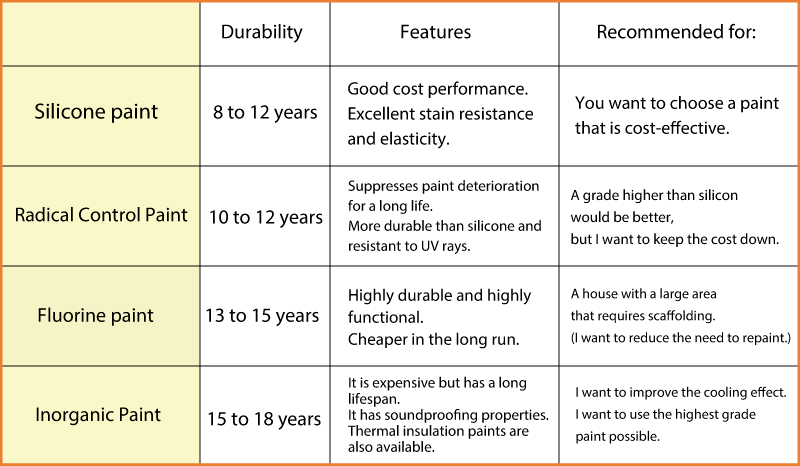
Each paint manufacturer sells a variety of paints, which can be broadly categorized into the following types.
In the past, paints under "silicone" such as "acrylic" and "urethane" were mainstream. Many of you may have heard of them.
However, a big purchase like exterior wall painting requires costs other than the paint (such as scaffolding). If you use paint that only lasts a few years and have to repaint every few years, the costs will increase. For this reason, paints that last longer than silicone have become mainstream in recent years.
Generally, they can be divided into three grades: "silicone," "fluorine," and "inorganic," but various new types of paints have been developed, such as silicone paints that last for more than 10 years and non-inorganic paints that last for 20 years. Nurikaeru also handles new paints, so please contact our staff for details.
2. Water-based and solvent-based paints
There are two types of paint: water-based paint and oil-based paint (solvent/weak solvent).
If the liquid used to dissolve the paint's components (solids) is a solvent (such as thinner), it is called "oil-based paint (solvent/weak solvent)." If it is water (water-based), it is called "water-based paint."
Let's take a look at the features and benefits of each.
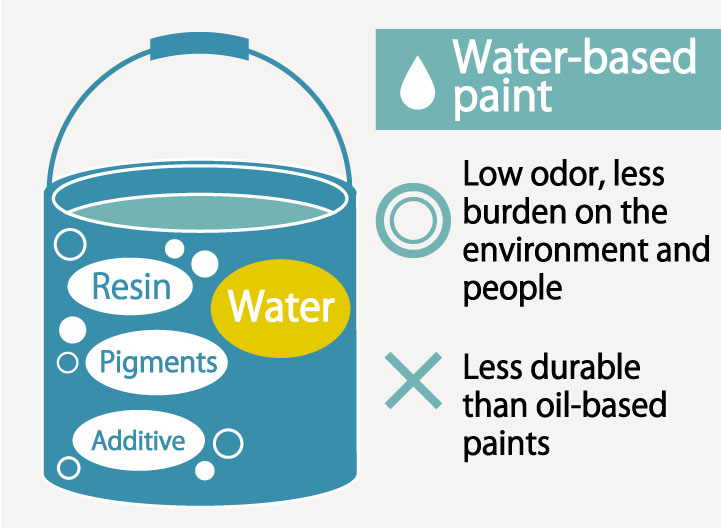
Water-based paint
The main component of water-based paint is water. Paints diluted with water have less odor and are less stressful on the environment and people. Another advantage of using water-based paint is that it is less of a nuisance to neighbors during construction. It is also recommended for families with small children or pets, and for people with allergies who are sensitive to smells. However, it is generally said to be less durable than oil-based paints (solvent/weak solvent). In recent years, water-based paints using the latest technology have spread rapidly, and new paints with high durability and other functions are being developed, so keep an eye on them.
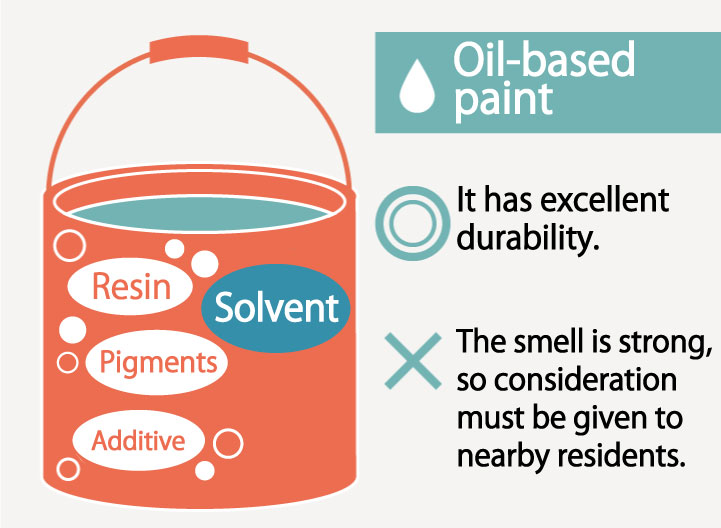
Oil-based paint
Depending on the dissolving power of the thinner, rather than water, paints can be divided into weak solvent and solvent. Paints that would not dissolve with water are dissolved by using thinner to do so, so the paint is very strong, and if applied correctly, solvent paints will be very durable. However, because thinner is used, there is a strong odor, so consideration must be given to the effects of nearby residents. That is why weak solvent types have recently appeared. They have little odor and are environmentally friendly.
3. Glossy and non-glossy

The aesthetic appearance of the paint also varies depending on the degree of "gloss."
After painting, a house has a glossy, shiny and clean appearance, but it is possible to reduce that gloss.
Finished image and advantages and disadvantages
Depending on the paint, it may not be possible to adjust the level of gloss or remove the gloss, so be sure to take this into consideration when choosing your paint.
With a gloss finish, it is possible to achieve a finish that is just like new construction. However, the gloss will inevitably fade over the years.
This will undoubtedly come sooner than the recommended interval of 10 to 15 years for repainting.
On the other hand, if you want a subdued, matte finish, we recommend a matte paint.
It doesn't have the freshly painted look of a new building, and looks blended in. However, it has the disadvantage of being more susceptible to dirt than glossy paints.

